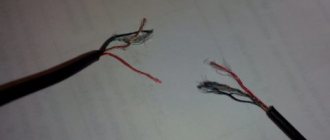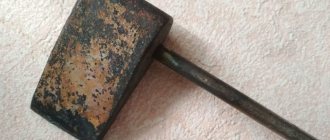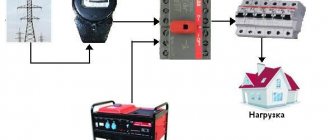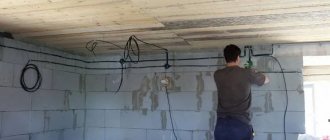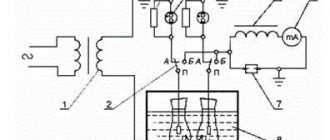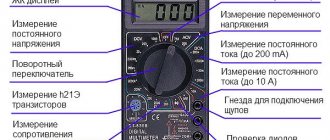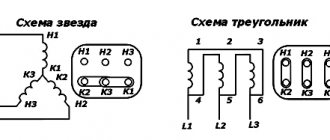The engine is the main part in a car. This is the heart of the car, which, in fact, makes it go. The engine is expensive. Even contract engines for budget cars can cost hundreds of thousands of rubles, which sometimes exceeds the cost of the used car itself.
The price of the engine is at least 70 percent of the cost of the car, so checking the car's engine is the main step before buying a used car. The check is performed in several ways, and you can find out not only about the condition of the engine, but also its number. With the help of technology it is easy to calculate even the real power of the unit.
There are a number of ways to check the engine of a car before purchasing, and today we will look at them in detail.
Self check
A method for those who understand cars and can determine the condition of the engine themselves. If you decide to check the car engine yourself, then start by opening the hood of the car.
When checking yourself you need:
- Inspect the engine itself for leaks, foreign liquids and deformation of the housing from impact. After this, the presence or absence of some common problems, such as damage from external impact (frontal impact) or oil leaks, will become obvious. If the engine under the hood of a used car is dusty and dirty, then you are in luck: a clean and washed engine does not show any leaks of oil or other liquids. You should inspect the engine for leaks during daylight hours and with a flashlight, in other words, with maximum illumination of the engine compartment. If the engine has recently been washed, then all that remains is to ask a question about oil leaks, counting on the seller’s honesty, otherwise such a defect will be identified over time after purchasing the car, and this will become an unpleasant surprise.
- While you are near the running car, you can check the sound of the car's engine. It should operate smoothly, without changes in sound and without making the sound louder or quieter without pressing the pedals. It is worth remembering that the sound of a diesel engine is different from the sound of a gasoline engine - it “rumbles” like a tractor, while a gasoline engine operates in the same key. The sound of boxer engines, which are found on some sports cars, for example, on the entire Subaru line, is also different - these engines “growl” even at idle.
- Take a ride in a car. In fact, the only way to see the engine “in action” is the ability to independently evaluate the power and response to the pedal, to understand whether everything is working as it should, and whether the car is losing power, whether there are any “dips” when driving, and so on.
- Inspect the engine compartment and find out if the car has had a frontal impact. If you can see that the front end of the car has been recovering from a severe accident, it is worth considering that this may affect the performance of the engine in the future.
- Connect the diagnostic wire - if you have such equipment, you can read the error logs of the on-board computer and find out for sure what problems the engine has. But be careful – sometimes unscrupulous sellers use technology to erase errors from the computer’s memory.
If you have a diagnostic wire and you are checking a foreign car that is not too old, then connect a laptop through it and read the errors recorded by the on-board computer. In modern cars, the computer reads errors and saves them in a log, which can always be viewed using the appropriate equipment, which is simple and inexpensive: you only need an OBD cable, a laptop and software for your car brand.
If you are unlucky and come across a “dead” car, the computer will generate a bunch of errors, including engine errors. Next, you simply compare the error numbers with the database and get information about what exactly is wrong, and there can be a huge variety of different defects: from malfunctioning engine mounts, leading to vibrations in the cabin, to missing ignition coils or scuffing in the cylinders.
Dry and wet cleaning of “internals” from dust
Often the cause of a suspicious hum of a vacuum cleaner and an unpleasant odor is the accumulation of dust inside it. It is better to remove dust using “dry” methods so as not to damage the fragile electronic filling and not to disrupt the function of the conductive paths on the board. A small soft brush is suitable for cleaning. You can also use a room fan. If dust and dirt cannot be removed “dry”, after moisture has entered, all parts must be dried as quickly as possible. Plastic elements can be washed under running water. They should be put back together only after they are completely dry.
The drum and cable are easy to dry clean, as is the plastic motor housing. If the casing cannot be cleaned without using water, make sure that it does not touch the electrical circuit. You can use another vacuum cleaner with a suitable attachment as a dry cleaning tool. This is exactly how dust is removed from motor collector plates and windings. Strong air pressure cleans the board and its small parts well – even with heavy dirt.
Checking at a car service center
A surefire way to learn everything about a car and its engine if you don't consider yourself a good expert to inspect it yourself. For a reasonable fee, service specialists will inspect the car completely, consider it a computer (if the car has a diagnostic connector), check all the technical components of the car and even find out whether there has been interference in the memory of the on-board computer, whether the mileage has been changed through it and whether errors have been erased.
It is better to contact either official dealers or specialized centers that work with one brand of car, or with a narrow range of car brands. As a rule, such services know better all the typical “sores” of cars and are very well versed in the engines presented on the brand’s models.
In this case, you only need to choose a service that has a large number of positive reviews and a long history of work, pay for the service and wait until the diagnostics are completed, after which you will be given a work order. Whether you buy a car after that and pay for spare parts and repairs, or hand over the document to the seller and refuse to buy the car, is up to you. This method of checking a car engine is very effective and, as a rule, error-free - if the car is faulty or requires significant investment, specialists will report this based on the diagnostic results.
Advantages of using a car service:
- You will know for sure all the ins and outs of the car and its components: they will tell you whether the car’s mileage was low, whether there were any accidents, what exactly needs to be replaced or repaired at a given time, etc.
- They will issue an order on the spot and tell you where to purchase spare parts and consumables. If you purchase a car right on the spot, you can begin to work on fixing problems without going anywhere.
Disadvantages of working with a car dealership:
- It is necessary to pay for the services of a specialized service; prices vary depending on the region and the qualifications of the servicemen. On average, for services specializing in foreign cars, one standard hour is estimated at 900 to 2000 rubles, diagnostics last an hour and a half, these costs are borne by the potential buyer.
- You will have to spend time on the road to the service, diagnosing the car and then on the way home, you also need to agree on a time that is convenient for all parties: you, the seller and the car service center. Due to the complexity of the organization, the process can take weeks.
- If you choose an inexpensive service “behind garages,” there is a risk that the diagnostics will not be carried out efficiently, which will result in additional expenses for you after purchasing the car.
Why check the engine before buying?
A mistake many buyers of used cars make is choosing a car solely based on its appearance and condition of the body. As a result, such a car can sport an excellent body and a freshly restored interior, but at the same time has hidden engine defects, which leads to significant costs for the car owner to restore the engine.
The engine and gearbox are among the most complex and expensive components of any car. And it is they that are subject to increased load during operation, which leads to various types of breakdowns and malfunctions. Engine repair is very difficult; therefore, even with ordinary breakdowns, you have to open the engine and replace expensive parts, which leads to significant costs for the car owner.
That is why it is imperative to carry out an appropriate engine check before purchasing a car. You can perform such a check either independently if you have the appropriate work experience, or by contacting a workshop, where specialists, using appropriate computer diagnostic equipment, will inspect the engine and identify engine breakdowns.
On-site vehicle diagnostics
The service has come into use recently, but has managed to spread widely and attract a huge number of specialists. Today, anyone can order a car inspection at home; it’s practically the same as a car service, only specialists come to you, and not you to them.
As a rule, the inspection is carried out by automobile experts who work either as mechanics in a car service center or as specialists in the sale of used cars. With a trained eye, they will determine the condition of the car, conduct diagnostics through the on-board computer and tell you exactly what this car has experienced in the past, and what you should be wary of in the future.
The advantage over the service is that you do not need to go anywhere, and the check will be carried out faster, however, the weakness of field specialists remains the lack of complex equipment present in car services, such as a lift. However, if you have a garage with a pit, this problem is leveled out.
- Specialists will come to you with a set of necessary equipment and inspect the car. The work takes from 40 minutes to one hour.
- As a rule, on-site diagnostic specialists have carried out a similar procedure many times already, and with a trained eye they can quickly and accurately determine what exactly is wrong with the car. The quality of diagnostics and the “verdict” of field experts are usually very accurate.
- Experts in car selection also negotiate with the seller for you, and you can “bring down” the price of a car you are interested in in good condition. Despite the fact that the price for such services is high, it is usually less than the amount that car selectors manage to negotiate for, and as a result, everyone benefits.
- Lack of some professional equipment present in the car service.
- There is a risk of encountering amateurs who incorrectly assess the condition of the car.
Checking the electric motor by external inspection
Before checking the motor winding with a multimeter, you need to examine the disconnected motor along with the power cord to look for mechanical damage, signs of insulation breakdown or overheating. The motor axis should rotate easily in the bearings, without jamming or jamming. There should be no smell of burnt insulation, oil spreading, or sagging.
Read also: Chainsaw stalls when you accelerate
The absence of visible damage may require disassembling the engine to inspect graphite brushes, contact lamellas, the condition of the coils, and their leads. The shorting of the electrical circuit causes heating, which is manifested in clearly visible color changes near the breakdown of the insulation.
How to check car engine power
If you buy a powerful car with a lot of “horses”, it is probably important for you to know whether the engine has lost its potential over the years.
For such a check, it is necessary to drive the car to a power stand, a special device on which the engine is subjected to maximum load and they find out how much horsepower and torque the unit actually has.
Over the years, cars lose their former properties, engines weaken and lose horsepower, and only with the help of a power stand can you find out how many of them are left, and only then decide whether it is worth buying a car that has lost its former strength over time.
It doesn’t matter whether you check the car yourself or take it to a service center, you can always find out the most basic things about the car’s engine thanks to the Autocode online service. The free report based on the results of the inspection will indicate the type of engine, its power and volume, so you can calculate the tax on this car in advance and estimate fuel consumption.
By ordering a full report for 349 rubles, you will find out the entire history of the car: actual mileage, presence of traffic police restrictions, customs history, history of fines, information about compulsory motor liability insurance and those. inspections and much more.
Before buying a car, with or without checking its technical condition, it is always better to have a report on it. With its help, you can avoid significant losses and not face deception from the car seller.
If after receiving the report you are unable to travel for inspection, use an on-site inspection. The technician will arrive on site and diagnose the car using special instruments. Just order an Autocode on-site inspection and be confident in your purchase.
Replacing a power unit in Russia used to be almost impossible. So many documents had to be collected that the whole point of the procedure was lost. In the process of processing such a replacement, the owner had to visit all police departments and pay a lot of official and unofficial fees. Today the situation has changed for the better. This does not mean that nothing needs to be done to register a new acquisition, but the complexity and duration of these activities has been significantly reduced. Today we will not discuss the issue of documents and procedures for replacing an old motor with a new one. Much has already been said about this, everything has been sorted out. Let's talk better about the hardware part of the process. How to choose a good used engine and make sure of its quality? This is a complex procedure that requires the buyer to be extremely careful and not rush.
It's one thing when the engine is installed on a car. It is enough to take a ride in the car and listen to the operation of the unit in different modes. But when you select a motor that has already been dismantled, it is almost impossible to check it. You are buying a metal product that has been used in another car for many years. Now it is important to assess the condition of the engine, look at the main features of its technology, and make sure that the engine is working and will not let you down in the near future. Of course, when replacing an engine, it is best to buy a new product and get a warranty. But this is not always possible from a financial point of view. Today we will touch on the topic of checking and choosing a used engine at a disassembly site or in another specialized company. There is no need to check new motors. It is enough for them to be installed by an official dealer, who will confirm the warranty and issue all the necessary documents for the unit.
CONTENT
When purchasing a used car, you must be very meticulous in assessing it before purchasing at the inspection stage. The main feature of a used car is that the previous owner does not bear any warranty obligations to the buyer. Therefore, it is recommended at the stage prior to purchasing a car to identify as much as possible all possible shortcomings so that they do not make themselves known at the moment when it is already your property.
As a rule, the first thing a buyer does is examine how the car looks externally, looking for touch-ups, dents, chips, scratches, etc. But without a well-functioning engine, a beautiful body has no special value at all. This means that you should definitely look under the hood of the car you are buying.
- How to properly check the engine when buying a car
- What to look for in the engine
- Checking the engine in operation
HOW TO CHECK THE ENGINE CORRECTLY WHEN BUYING A CAR REMEMBER
!
The very first and, perhaps, most important thing is not a word about the fact that you have little understanding of car engines.
You need to either say nothing at all and mysteriously remain silent with an intelligent face, or pretend to be a seasoned motorist who has seen so many engines in his lifetime that he himself can design breakthrough new products blindfolded.
Speak measuredly, clearly, and be calm. Never express joy if you hear something you expected. You need to put on the so-called calm mask, absolutely without emotions.
Analyze all the seller's answers. If he begins to “pour water” or evade answering, it means that something is clearly wrong, and there is some kind of “sin” in the past regarding this car. Pay attention to the seller's reaction when you inspect the car. Does he allow you to look wherever you want, or does he try to distract you in some places and transfer you to another topic?
WHAT TO LOOK FOR IN THE ENGINE
To inspect the power unit of the vehicle you are purchasing, you will need: - work gloves; - clean rags; - White list. So, start examining.
1. External inspection
Open the hood of the car and look around the entire engine compartment. Look for oil stains and drips - these are the first signs of engine trouble.
Even small signs can turn into big problems for you in the future due to oil leakage.
Pay special attention to the areas around the fuel pump and ignition distributor. The causes of leaks may be hidden in leaky gaskets, rubber seals and loose hose clamps.
Another cause of oil leaks is a poorly fitting cylinder head cover. Take a good look at the joint and make sure it is free of oil and sealant. Even if the seller brought the engine back to normal in advance, he could still miss something.
Don't be shy, expose! For example, marks on the inside of the hood may indicate an engine malfunction; inspect it more closely. If scratches, even minor ones, are visible on the bolts and nuts, it means that someone has already opened the engine, and this is clearly not without reason. But it’s good if you were notified that the engine was scheduled to be rebuilt recently.
2. Check the condition of the engine oil and antifreeze
Check the oil with a dipstick, and check the antifreeze by simply unscrewing the cap of the expansion tank or radiator.
The oil should be transparent, without visible impurities and small chips, not too viscous and not emit strange odors. There should be no foreign deposits or streaks on the dipstick. Bubbles in the oil are the first sign of a leak, and this is a very serious problem.
In the case of coolant, the appearance of air in it means that it is leaking directly into the engine. There are two reasons for this: either the gasket is leaking or the block head is cracked, and this is completely unacceptable.
REMEMBER!
Antifreeze is a caustic liquid and can damage the piston rings, which will subsequently cause irreparable damage to the entire engine.
3. Oil filler cap
Inspect the cover inside and out. There should be no foam or white residue under it or on the neck itself. The presence of the latter clearly indicates that antifreeze has entered the engine. We have already discussed what will happen to the engine in the future in the second paragraph.
4. Candles and rubber elements
- Hoses and seals must not be damaged, even small cracks are unacceptable.
- If under the hood is dirty and dusty, put on gloves, don’t be lazy, and use a rag to wipe all the components and inspect them. Old soot can hide many defects.
- If possible, unscrew a couple of spark plugs; you can tell a lot by their appearance.
- If they are fine, they will have a thin layer of light grayish or yellowish coating on them.
- Slight wear of the electrode is acceptable.
- If a crack appears on the surface of at least one spark plug, it means that the engine will run with a knock.
- If there are abundant light deposits on the spark plugs, the oil was selected incorrectly.
- If the center electrode of the spark plug is melted, this may indicate many problems, ranging from early ignition and poor quality fuel to problems with the valves and ignition distributor.
- The formation of a hard glaze-like build-up consisting of soot, or severe wear of the electrodes, means that the oil or fuel used had numerous additives.
- Oily spark plugs are an indicator of excess oil in the lubrication system and serious wear on the piston rings, cylinders and valve guides. Soot on them indicates a poor formation of the air-fuel mixture or a clogged air filter that requires replacement.
back to contents
CHECKING THE ENGINE IN OPERATION
1. Start the engine and accelerate a little in place
When starting, the starter should not grind or make other extraneous sounds. The engine should start on the first try, no matter how warm it is and what weather conditions are outside. It should work without interruption, absolutely smoothly. If the engine starts to jerk, extraneous vibrations are observed, the rhythm is lost, there is only one conclusion - the engine is shaking. This means that one of the cylinders has stopped working. The reason may lie in a faulty ignition system, poor performance of one of the spark plugs, an over-rich fuel mixture, or a burnt-out piston. In any case, discuss this problem with the seller. Estimate how much the repair will cost and save a couple of times more for the car.
2. Check instrument readings
When the engine is running and warm, the arrows of the temperature and oil pressure sensors should be within normal limits, ideally in the middle position.
3. What kind of smoke comes from the exhaust?
If, when starting the power unit, abundant white smoke came out of the chimney, but soon disappeared completely, then there is no need to worry at all: it is most likely simple condensation. If smoke does not stop coming out of the chimney, then the problem can be quickly diagnosed by smell and color.
If the smoke is white or has a slight bluish tint, which quickly dissipates in the air, leaving a sweetish smell, this means that there is antifreeze in the car engine cylinders.
Clearly blue or bluish smoke , which may also have a whitish tint, hanging in the air with a light lilac or gray haze, means that oil is leaking into the combustion chamber.
If the car “shines” with such surprises, it is better not to risk turning a blind eye to it, because repairs can cost you very much.
And finally, black smoke indicates that the air-fuel mixture is not burning efficiently. The reasons for this are several malfunctions: coking of the air jets, depressurization of the injectors, malfunctions in the lambda probe and air flow sensor. The consequences in this case are that the engine wears out much faster, and the exhaust toxicity becomes prohibitive.
4. Test drive
If the car you like passed all of the above tests with a bang, then all that’s left to do is take it for a ride.
The first mistake buyers of used cars make at this stage is a short test drive. Often they are limited to a short trip around the bazaar, but this is not enough to fully understand what kind of car they are driving.
If the car's engine exceeds all your expectations over a short distance, ask the seller to drive it a few more kilometers. Agree that you will compensate for expenses and time costs. It’s better to check now than to waste money later on faults that were not identified in time, racking your brains over the question of where to find a good mechanic at a cheaper price.
Focus on the sound of the engine, do not turn on music or anything that might drown it out.
- Listen to the engine with the windows open and closed,
- accelerate, experiment with sharp accelerations and observe the behavior of the car.
- Accelerate to 100 km/h or more, if traffic rules allow, and look into whether there are any vibrations and jerks, how the engine sounds, whether it makes any extraneous noises, knocks, or other irritating and abnormal things.
5. Re-diagnosis of the motor
At the end of the test drive, look under the hood again and check if there are any leaks and if everything remains the same as it was before the race.
If after a trip you are confused by some hint of a leak, but the engine is clean and looks good, most likely this is just a move by the owner to sell the car faster - he washed the engine.
But if other points do not bother you, then this place of oil leakage is nothing terrible, and you can safely buy a car for a small discount.
If the engine kicked like an unbridled stallion while driving, and then spat out a lot of oil drips, then refuse to buy such a car. Pay the cost of gas and keep looking, because this car is not for you. This car will be purchased by someone who likes to repair rather than drive.
And let's summarize. If all of the above is not enough for you, or you doubt your strengths and capabilities, take a knowledgeable person with you or go to a service station and order a comprehensive engine check. This way, you will protect yourself and minimize the likelihood of buying a car with a “finished off” engine.
back to contents
based on materials from the site: AUTO-TO-DAY
Post Views: 1,303
Where to buy a used motor is an important question
There are three main places to look for a used deal. It is very important to choose the right source so as not to get into trouble with the device in the future, including its documentation. Other verification factors also depend on the choice of acquisition method. Sometimes it is enough to visually inspect the unit, but in many cases it is better to test it. When purchasing a used power plant for a car, you should pay attention to the following sources of information about the products sold:
- Advertisement sites. Here you can easily find private advertisements for the sale of engines removed from other cars. Focus on offers from private individuals, it is easier to get a discount and honest information here.
- Showdown. In such companies you can always find a motor with the required characteristics and get quite adequate equipment. Do not forget to compare the cost of units at different disassemblies.
- Contract motors. A very important area is the delivery of contract engines to Russia. These are units with low mileage that were removed from cars in Japan, Europe or the USA, and then sold in the Russian Federation.
- Automotive stores. Many large companies sell used units. Their advantage is that they often test the motor before selling it and give a small guarantee.
We call the commutator motor
We switch the selector to resistance. At 200 ohms. And we call the rotor and stator separately. The rated resistance of each stator winding - usually there are two - can be found in the documentation for the motor. But, if it is unknown, any value in the range from 5 to 100–150 Ohms will indicate the serviceability of the winding. The rotor or armature of a commutator motor has more windings. We call each one. We position the probes in the manifold so that they are at the maximum distance from each other. The probes seem to take the place of the engine brushes. Turn the rotor slightly until the multimeter shows a slight resistance. We continue to rotate the shaft until contact is lost and then restored. So we check all the windings. Then we move the tester selector to the resistance sector, setting the limit to 2000 KOhm and check for leakage. Without touching any engine parts or bare probes with bare hands, we measure the resistance between the stator winding and the housing. The device should show one. The rotor is checked in the same way. Each winding and housing are closed. If the device shows a value different from one, action must be taken. Take care of yourself, follow the safety rules.
Visual inspection of a used engine – what to look for?
Used motors look pretty similar to a layman. One may be dirty and the other clean. The price tag often contains information about mileage, which is almost never true. It is especially surprising when at a showdown they offer the engine of a popular car model with a mileage of 70-80 thousand km. Cars often end up being dismantled after 500,000 km. This is worth remembering. Visually you can evaluate the following points in technology:
- condition of the housing - here we are not talking about cleanliness, but about the presence of various types of damage, especially in the engine crankcase area, which can indicate problems with the internal combustion engine;
- appearance of the peripherals - look at attachments, wires, terminals, plastic covers, as it is easier to determine age and mileage by their appearance;
- dipstick and oil filler cap - if used carelessly, these parts become loose and untidy, and a new dipstick should also make you a little wary and raise questions when purchasing;
- timing belt - if you buy a motor with a mileage of 130,000 km, and the belt on the motor is completely worn out, it means that the engine has not been worked on, or the mileage was indicated to you incorrectly;
- bolts on the body - if there are traces of unscrewing, then they were introduced into the engine with an attempt at repair, this is not the best option to purchase, it is better to check it more carefully.
These checking features do not provide unambiguous information, but they help to better understand which unit is in front of you. This is important for the overall assessment of the offer and will also help you negotiate with the seller. You always need to bargain for used units, unless you are talking about buying a contract motor. Most likely, at the visual inspection stage you will be able to understand whether it is worth continuing to study this proposal. This is an important, but not the most valuable process.
MUFFLER
Diagnostics of internal combustion engines in this method is banal and very simple. You need to put your finger into the muffler pipe and move it along the walls.
The finger will be a little dirty, because the engine is running and the process of fuel combustion is still ongoing. It will also be a little wet, because there is condensation in the muffler. BUT there should not be a velvety black soot that almost spills out of the pipe. Or what’s even worse is oil deposits (that is, your finger will be covered in oil). If this is the case, then the wear of the power unit is very strong and it cannot be taken.
Technical check of a used or contract motor
There are not many technicians that can help carry out a technical check of an engine that is not installed on a car. In this case, there is no way to start the engine, check its operation, or listen to sounds. But you can also visually evaluate many technical aspects. By the way, at this stage you can check whether the unit has been removed from the drowned car. To do this, you need to look for rust or even the remains of small algae in places where there can be no corrosion.
Technical assessment of the motor involves the following procedures:
- unscrew the spark plugs - each spark plug should have the same pattern - brown carbon deposits at the end; if the spark plugs are new, be sure to find out the reason for their installation on this unit;
- look at the timing belt manufacturers (the original is best, ContiTech, Gates), the oil filter brand (Mann or Knecht), the spark plug brand (Bosch, NGK and other well-known brands);
- Using a micrometer, you can measure crankshaft lateral play in a few minutes - read more about this procedure if you know how to perform this task;
- measuring compression in the cylinders is possible with the engine removed, and it is also advisable to do this, but you should not rely on these indicators, especially if the unit has been sitting for a long time;
- It is advisable to remove the manifold and look at the condition of the valve system - on V6 engines from Europe there may be a small amount of carbon deposits, but on other units there should not be any.
These are the difficult features of technical testing that should be taken into account when purchasing a contract or simply used unit. More detailed information can be obtained by specifying the specific model. Diesel power plants have their own important testing rules; for powerful or exclusive technical units, you can find expensive special diagnostic equipment. Sometimes an inspection may not cost much less than the product itself.
We conduct a test drive upon purchase
When choosing used cars, you should conduct the most detailed test drive, including checking the engine. It is necessary to evaluate the dynamics of the car, the absence of power failures and any extraneous sounds when accelerating and driving at a constant speed. It is necessary to carry out such a test drive with the window open and closed, which will allow you to hear all the extraneous sounds and knocks in the engine. Only after such detailed diagnostics can you decide to buy a new car.
Conclusion
A high-quality and most detailed check and diagnostics of a used car engine upon purchase will allow you to subsequently avoid any difficulties with the power unit, and you will be spared unexpected costs for car repairs. You can perform such diagnostics either at specialized services that use appropriate computer equipment for diagnostics, or independently, through a detailed inspection of the engine, which will help you identify existing faults and make the right decision on the advisability of purchasing.
The engine is the main part in a car. This is the heart of the car, which, in fact, makes it go. The engine is expensive. Even contract engines for budget cars can cost hundreds of thousands of rubles, which sometimes exceeds the cost of the used car itself.
The price of the engine is at least 70 percent of the cost of the car, so checking the car's engine is the main step before buying a used car. The check is performed in several ways, and you can find out not only about the condition of the engine, but also its number. With the help of technology it is easy to calculate even the real power of the unit.
There are a number of ways to check the engine of a car before purchasing, and today we will look at them in detail.
Installation and first days of operation of a used engine
Installation of the unit is quite simple. If you have chosen the engine of exactly the desired model, it is enough to dismantle the old installation and install a new one. After this, it is important not just to go on a trip along the roads of Russia, but to check all the functions and capabilities of the engine. Only in this case can you finally be sure that you have purchased the appropriate power unit option. Basic testing immediately after installation consists of the following features:
- prepare the engine for operation - replace spark plugs, filters, oil and belts to ensure that your car is safe to drive, no matter what conditions you drive it in;
- warm up the equipment well, look at the operating temperature and start moving very smoothly and slowly, only after a few kilometers can you increase the speed;
- after a good warm-up, stop, open the hood and listen carefully to the operation of the unit, this will help you quickly identify possible problems on the first day of operation;
- then get back in the car, find a fairly long straight with good asphalt, go to gear 3 on the manual or lock the gear on the automatic and accelerate;
- A few minutes of driving at high speeds will give you a full understanding of possible engine problems, but be careful - with large problems this can lead to instant failure.
There are dozens of unit testing methods that can help you get the results you want. You can pay a lot of money to specialists, or you can carry out all the necessary procedures yourself. But be extremely careful, as one wrong move can easily ruin the engine and cause big problems in the future. Interestingly, a self-test perfectly demonstrates all the troubles of the node.
We invite you to watch the video and get more information about checking an engine that has not yet been installed on a car:
BLUE SMOKE FROM SILENCER
NOT white , not black (this is still being treated), but blue smoke . More precisely, if you look at it, it will have a bluish tint.
This check determines that the piston group or the walls of the cylinder block are already worn out. Oil scraper rings do not remove oil from the walls or it breaks into the combustion chamber, then burns with the air-fuel mixture and exits into the muffler.
By the way, because of this, the catalyst . It can simply fail after a few thousand kilometers.
Let's sum it up
We can talk for a long time about the fact that replacing the engine is not an ideal solution to the problem. But sometimes situations develop in such a way that this is the only way to continue operating the vehicle. It's worth considering this option if the cost of repairing your engine proves to be prohibitive. In this case, it is worth choosing a used unit, even if it is a contract motor or a unit removed from a car in Russia for disassembly. Sometimes, when checking, you can make sure that you are buying a quality unit. But in most cases, the main testing will be done after installation.
There is no perfect option for purchasing a used powertrain. There are only recommendations for each case, but not a specific way to buy a guaranteed good engine. To a greater extent, contract engines are installed on cars. These are engines from another country that have not been driven too much; they are often removed from cars after an accident. But this is not a panacea, since contract units are often damaged internally. Therefore, when purchasing, always agree on a possible return or exchange of the purchased equipment. What do you think about installing a used engine in a car?
Types of electric motors
The most common electric motors are;
Three-phase asynchronous squirrel-cage motor
– asynchronous three-phase motor with a squirrel-cage rotor. Three motor windings are laid in the stator slots; – asynchronous single-phase motor with a squirrel-cage rotor. It is mainly used in household electrical appliances in vacuum cleaners, washing machines, hoods, fans, air conditioners; – DC commutator motors are installed in the vehicle’s electrical equipment (fans, power windows, pumps); – AC commutator motor is used in electrical tools. Such tools include electric drills, grinders, hammer drills, meat grinders; – an asynchronous motor with a wound rotor has a fairly powerful starting torque. Therefore, such motors are installed in lift drives, cranes, and elevators.
Any engine consists of a permanently fixed housing - a stator and a rotor rotating in it, which is also called an armature.
Its circular motion is created due to the influence of the rotating magnetic field of the stator on it, formed by the flow of electric currents through the stator windings.
When the windings are in good condition, rated currents flow through them, creating magnetic fluxes of optimal magnitude.
If the resistance of the wires or their insulation is broken, then leakage currents, short circuits and other damage are created that affect the operation of the electric motor.
The minimum possible gap is made between the stator and rotor. It can be violated:
When rotating parts touch a stationary body, their destruction and additional mechanical loads are created. All this requires a thorough inspection, analysis of the condition of the internal parts before electrical checks begin.
Quite often, unqualified analysis is an additional cause of breakdowns. Use special tools and pullers to prevent damage to the shaft faces.
After disassembly, immediately during inspection they check for play, free movement of bearings, their cleanliness and lubrication, and correct seating.
In addition, the commutator motor may have severely worn plates or brushes.
All this must be checked before operating voltage is applied.
Design features affecting defect detection technology
Typically, the manufacturer indicates the electrical characteristics on a plate attached to the housing. This information is worth believing.
However, often during repair or rewinding the stator design changes, but the nameplate remains the same. This option should also be taken into account.
For a 220 volt household network the following motors can be used:
Three-phase synchronous and asynchronous electric motors operate in 380-volt circuits.
They all differ in design, but, due to their work according to the general laws of electrical engineering, they allow the use of the same testing methods, which consist in measuring electrical characteristics by indirect and direct methods.
Why do you need a major engine overhaul?
Major engine repairs are usually done due to damage to the cylinder walls. Modern engines do not tolerate overheating and heavy loads immediately after a cold start. They are also sensitive to knocking effects when driving on low octane fuel. As a result, already by 150 thousand km on expensive premium cars, blue smoke may come out of the exhaust pipe, indicating the appearance of scuffing.
Due to detonations, pistons scratch the high-strength coating and break off its fragments. Oil enters the cylinders through the formed shells, and after combustion it is released into the exhaust pipe, coloring the gases dark.

